Automate Your Gardening and Save Time
Automated irrigation systems for vertical gardens are revolutionizing gardening by providing consistent watering while saving time, water, and effort.
These systems ensure your plants thrive with minimal maintenance, making them a must-have for any vertical garden setup.
This guide explores five popular automated irrigation systems, their benefits, and how to choose the best one for your vertical garden.
Watch Before You Start:
Discover how automated irrigation can simplify your vertical gardening! This video showcases systems and practical tips for hassle-free installation.
Watch: Automated Irrigation for Vertical Gardens
Why Use Automated Irrigation Systems?
- Consistency:
- Automated systems ensure plants receive the precise amount of water at regular intervals, eliminating the risks of overwatering or underwatering.
- Efficiency:
- Automated irrigation systems for vertical gardens save up to 70% more water compared to manual watering by delivering water directly to the roots, making them an eco-friendly option for urban gardening.
- Convenience:
- Perfect for gardeners with busy schedules or frequent travelers, as they require minimal intervention.
- Healthier Plants:
- Balanced watering promotes optimal plant health and higher yields in vegetables, fruits, and herbs.
For more water-saving gardening tips, check out Sustainable Gardening Practices.
Top 5 Automated Irrigation Systems for Vertical Gardens
1. Drip Irrigation System
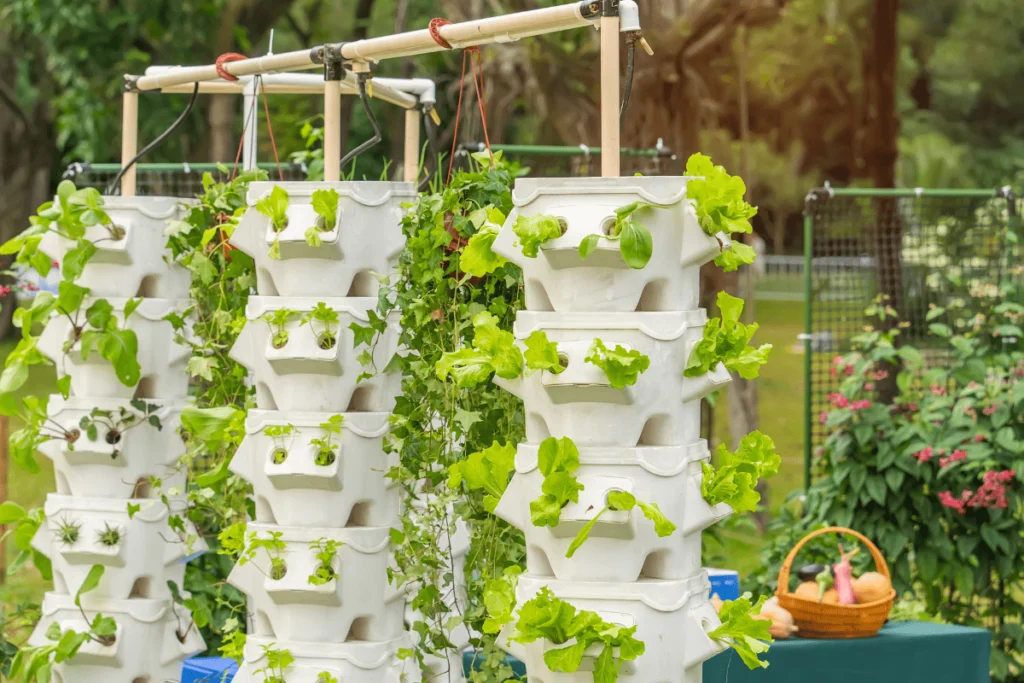
How It Works:
A network of tubes delivers water directly to the roots via emitters, ensuring precision hydration.
Benefits:
- Highly water-efficient, reducing waste.
- Ideal for both indoor and outdoor vertical gardens.
- Customizable based on plant spacing and water requirements.
Best For:
Herbs, vegetables, and compact ornamental plants.
Installation Tips:
- Use an automatic timer to streamline watering schedules.
- Regularly inspect emitters for clogs or blockages to maintain consistent water flow.
2. Self-Watering Planters
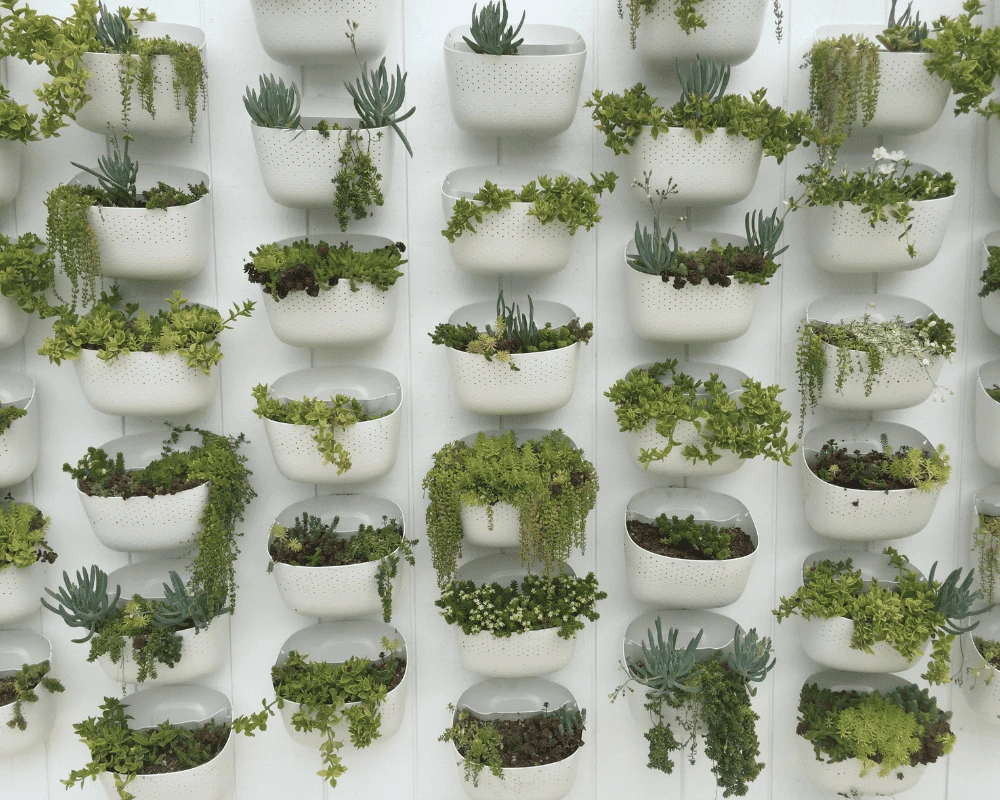
How It Works:
Self-watering planters are an excellent example of automated irrigation systems for vertical gardens, with built-in reservoirs allowing plants to draw water through capillary action as needed.
Benefits:
- Low maintenance; reservoirs only need occasional refilling.
- Prevents overwatering by letting plants absorb only the necessary amount.
- Compact and suitable for small gardens or indoor setups.
Best For:
Succulents, leafy greens, and low-maintenance plants.
Installation Tips:
- Use lightweight, well-draining soil to facilitate water absorption.
- Place planters in accessible areas for easy reservoir refilling.
3. Mist Irrigation System
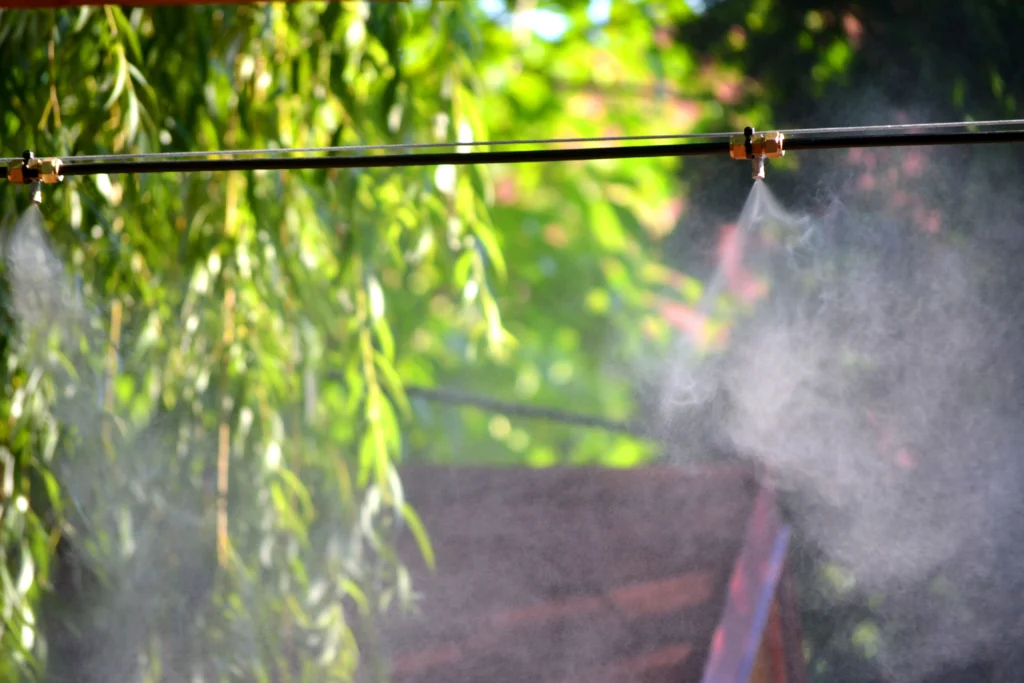
How It Works:
Fine water droplets are sprayed over plants using misting nozzles, simulating a humid environment.
Benefits:
- Maintains high humidity, ideal for tropical plants.
- Covers a large area with minimal water usage.
- Creates a cooling effect, making it perfect for warm climates.
Best For:
Ferns, orchids, and tropical plants.
Installation Tips:
- Set misting intervals carefully to avoid over-saturating the plants.
- Combine with a humidifier for an even more controlled indoor environment.
4. Wick Irrigation System
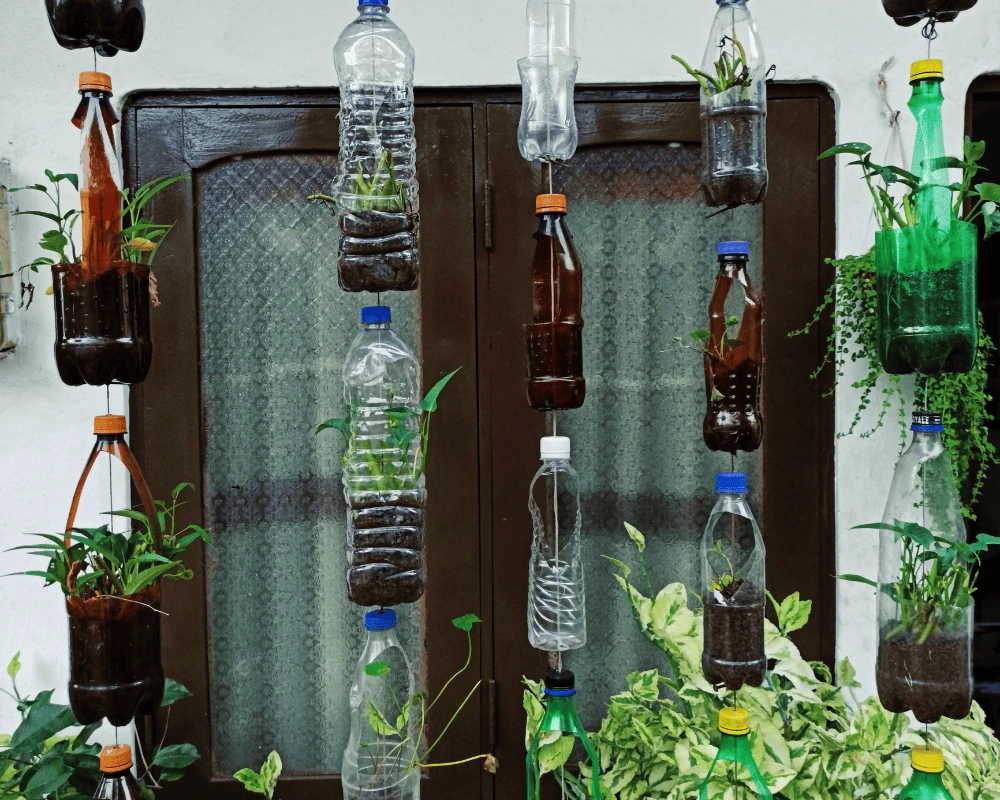
How It Works:
A wick connects the soil to a water reservoir, allowing plants to absorb moisture gradually.
Benefits:
- Simple, low-cost solution.
- Requires no electricity or complex installations.
- Suitable for beginners or low-maintenance gardening.
Best For:
Small herbs, flowers, and indoor plants.
Installation Tips:
- Use wicks made from absorbent materials like cotton or nylon.
- Regularly check the water reservoir to ensure consistent supply.
5. Smart Irrigation Systems
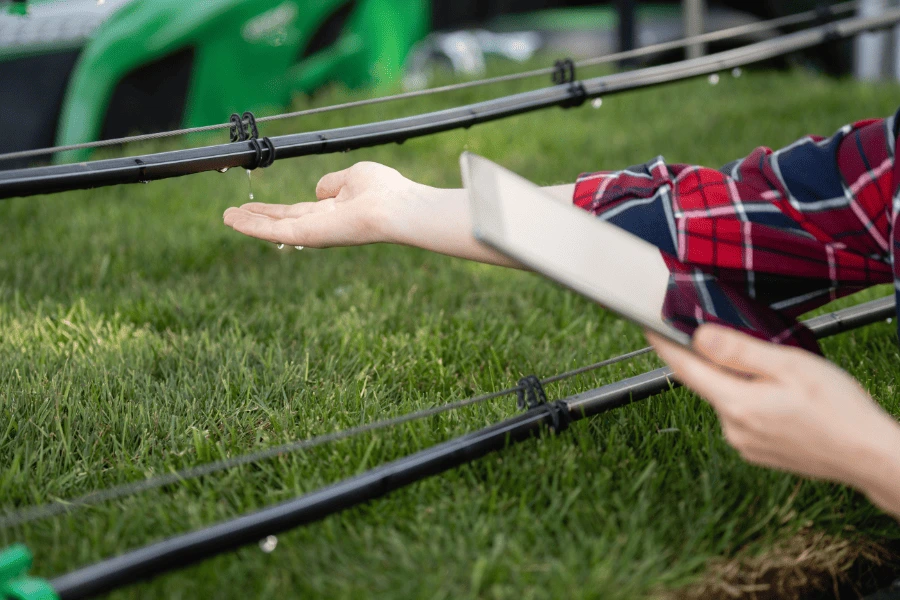
How It Works:
These app-controlled systems monitor soil moisture and environmental conditions, watering plants accordingly.
Benefits:
- Precise and highly customizable.
- Provides real-time data on soil moisture, temperature, and humidity.
- Compatible with smart home systems like Alexa or Google Assistant.
Best For:
Tech-savvy gardeners and large vertical gardens.
Installation Tips:
- Ensure a stable Wi-Fi connection for uninterrupted operation.
- Regularly update the software for optimal functionality and new features.
How to Choose the Right Irrigation System for Your Vertical Garden
- Garden Size:
- Small gardens: Opt for self-watering planters or wick systems.
- Large gardens: Use drip or smart irrigation systems for scalability.
- Plant Types:
- Tropical plants: Mist irrigation systems work best.
- Vegetables and herbs: Drip systems provide precise watering.
- Low-maintenance plants: Self-watering planters or wick systems are ideal.
- Budget:
- Low budget: Choose wick systems or DIY drip irrigation setups.
- High budget: Invest in smart irrigation systems for advanced features.
- Location:
- Indoor gardens: Focus on systems with minimal water spillage.
- Outdoor gardens: Ensure systems are weather-resistant and durable.
Additional Tips for Automated Irrigation Systems
- Combine Systems:
Use a mix of systems, such as drip irrigation for vegetables and self-watering planters for herbs, to optimize resources. - Use Rain Barrels:
Collect rainwater to supply your irrigation system, reducing environmental impact and saving water. - Test Soil Moisture:
Even with advanced automated irrigation systems for vertical gardens, it’s important to monitor soil moisture periodically to ensure plants are receiving the optimal amount of water. - Upgrade Over Time:
Start with a simple system like wick irrigation, and upgrade to advanced options like smart systems as your garden expands.
FAQs: Your Questions Answered
Q: Are automated irrigation systems expensive?
A: While advanced systems like smart irrigation can be costly, affordable options like wick irrigation and basic drip systems are available for budget-conscious gardeners.
Q: Do I need a different system for indoor and outdoor gardens?
A: Yes, consider indoor-friendly systems like self-watering planters for minimal spillage, while outdoor setups should be weather-resistant.
Q: Can I install these systems myself?
A: Most systems, including drip and wick irrigation, are DIY-friendly and come with detailed installation instructions.
Benefits of Automated Irrigation Systems
- Time Savings:
- Eliminates the need for daily manual watering, freeing up your time.
- Sustainability:
- Reduces water consumption by targeting plant roots directly.
- Better Plant Health:
- Prevents watering mistakes, ensuring healthier and more productive plants.
- Accessibility:
- Makes gardening possible for individuals with mobility challenges or busy lifestyles.
Conclusion: Simplify Gardening with Automation
Automated irrigation systems are essential tools for maintaining thriving vertical gardens with minimal effort.
By choosing the right system for your needs whether it’s a basic wick system or a high-tech smart irrigation setup you can enjoy lush greenery, vibrant flowers, or fresh produce all year long.
For more ideas on using technology in vertical gardening, explore Automated Vertical Gardens.
Start automating your watering today and watch your vertical garden flourish!

